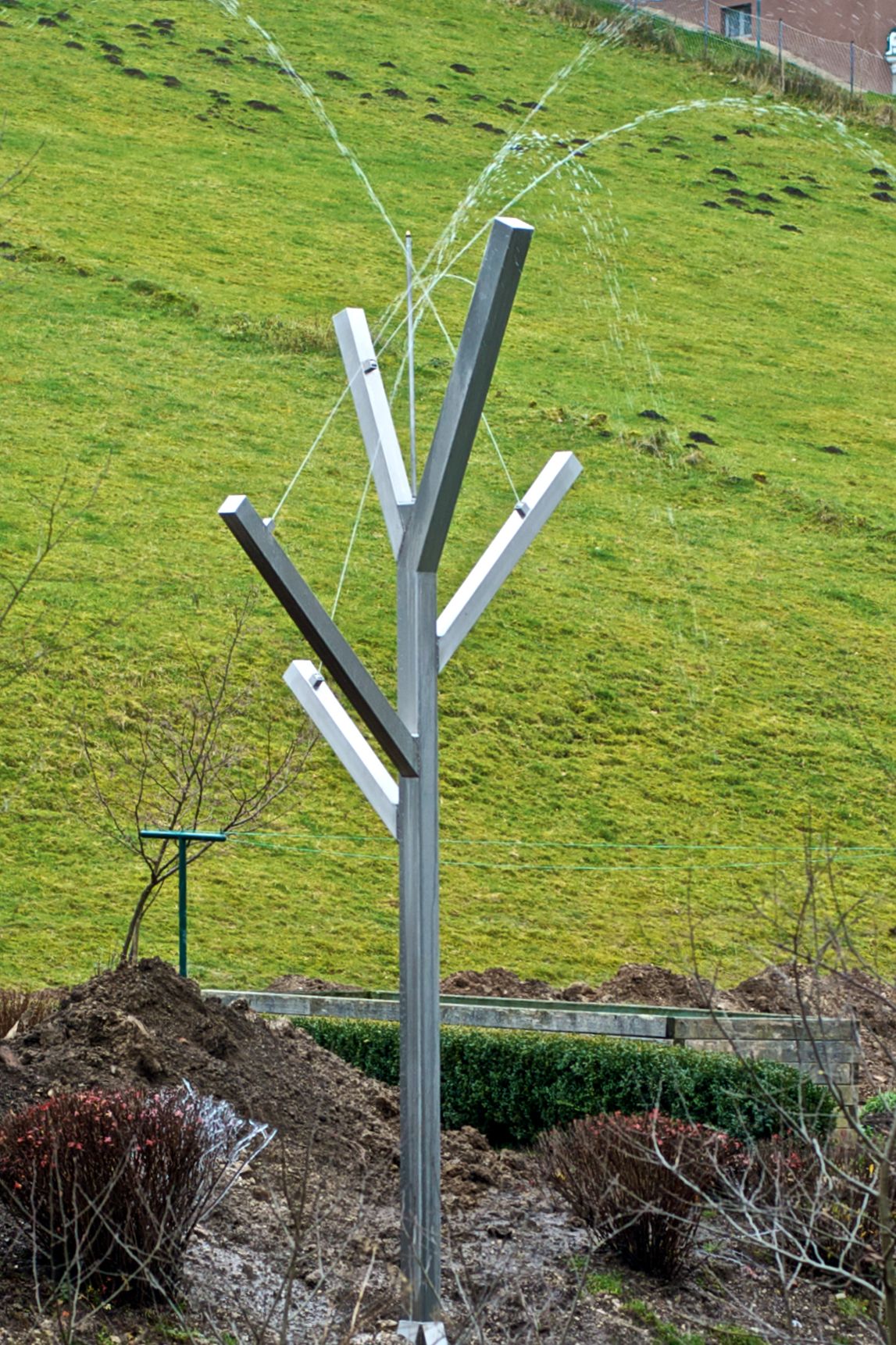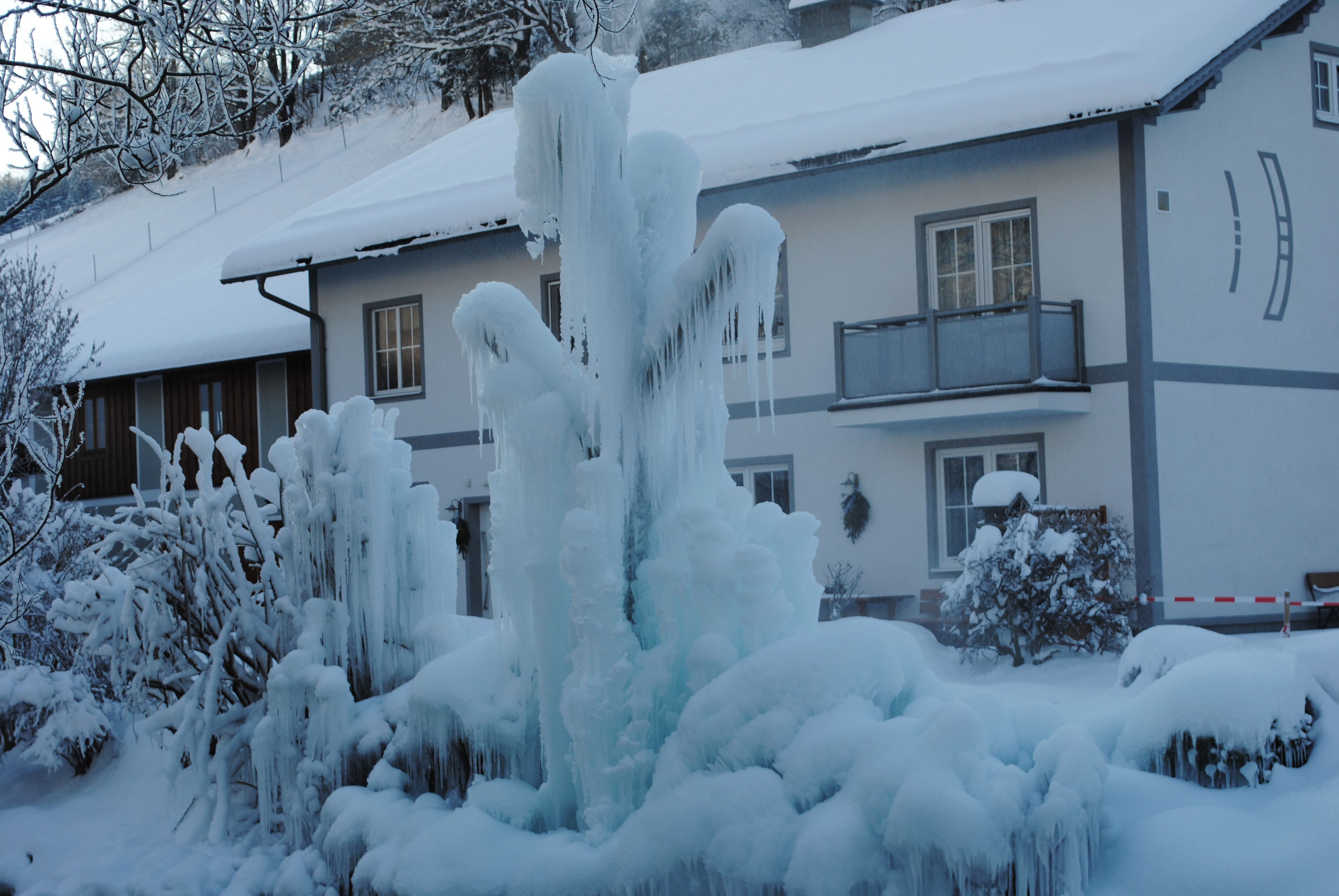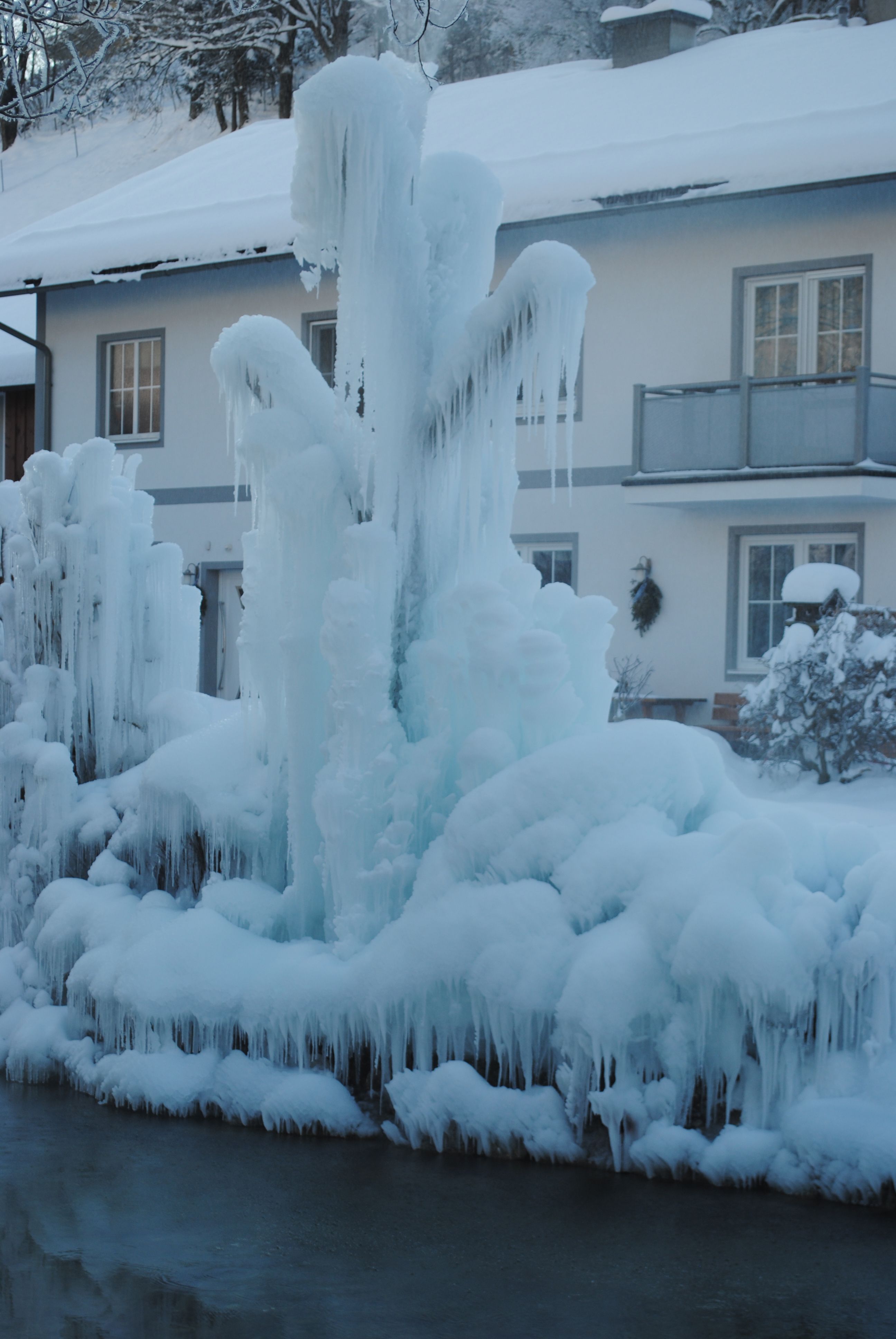Sepp Auer
:
Fountain Design in Ybbsitz
Back
Information
Sepp Auer has extended the stock of trees on the bank of the Prollinbach by a six metre tall stylised tree made of chrome-plated steel. The tree, reduced to its essential features, is adorned with a pump that takes water up from the stream and distributes it into the natural surroundings via the branches through valves developed specially for the sculpture. Unlike most fountains in these climbs the tree keeps running in the cold parts of the year and an integrated sprinkler valve clads it in a gentle web of ice.
Sepp Auer has extended the stock of trees on the bank of the Prollinbach by a six metre tall stylised tree made of chrome-plated steel. The tree, reduced to its essential features, is adorned with a pump that takes water up from the stream and distributes it into the natural surroundings via the branches through valves developed specially for the sculpture. Unlike most fountains in these climbs the tree keeps running in the cold parts of the year and an integrated sprinkler valve clads it in a gentle web of ice. Ybbsitz is a community with a history that has been closely connected with the ironsmith's craft since the 15th century. As a teacher at the Vienna University of Applied Arts Sepp Auer has held a number of symposiums in Ybbsitz on the subject of metal. The artistic results of these meetings can be found in several places around the community. When the sculptor won an invited entry competition in 1998 for the design of a fountain on Marktplatz in Ybbsitz his concept for this fountain was in granite — employing his own minimal formal vocabulary. The most recently completed fountain sculpture is different, even if the clarity of the artist's basic approach has remained the same. The brief was to conceive an object with the element water. Sepp Auer subsequently went to inspect the location, and must have spent a while next to the Prollinbach stream to appreciate that it not only played a key role for Ybbsitz and its tradition of metalwork craftsmanship but also lent the location a picturesque attraction, and so he has extended the existing stock of trees by a six metre tall, stylised, chrome-plated steel tree. "The thinking should be understandable", says the artist. The tree, which is reduced to its essential features, is fitted with a pump that draws water up from the stream and returns it to the natural surroundings via valves developed specially for the sculpture spead along the branches. Unlike most fountains, which have to be covered over when the temperature sinks below zero Celsius, the tree remains in operation throughout the winter. This is when it is at its most glorious, clad in a fine web of ice by an integrated jet of water. The web of ice finds its own paths. Who would have thought that a six metre tall steel sculpture could seem so tender and fragile? Sepp Auer is an artist with a particular gift for understanding a location's significance and material essence. In his works for public space priority is always given to the context. There is no trace of the irony which adheres to the sculptor's minimalist objects to be found in exhibition spaces. At the latter venues they blend in as apparently utility objects and pose questions about the significance that objects are charged with for us. Formulated in classical terms, in Ybbsitz Sepp Auer has placed an object of artistic beauty into the beauty of nature and then subjected the former to the laws of nature. So one does not have to choose between the one or the other kind of beauty. "It's about a particular stance, nothing else", says the artist. With this statement he has found his way to a third kind of beauty.
(Cornelia Offergeld)
Images (4)




